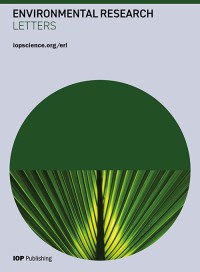Effect of subsidies and regulatory exemptions on 2020–2030 oil and gas production and profits in the United States

The United States has supported the development of its oil and gas industry since the early twentieth century. Despite repeated pledges to phase out 'inefficient' fossil fuel subsidies, US oil and gas production continues to be subsidized by billions of dollars each year. In this study, we quantify how 16 subsidies and regulatory exemptions individually and altogether affect the economics of US oil and gas production in 2020–2030 under different price and financial risk outlooks. We find that, at 2019 average market prices of oil and gas, the 16 subsidies could increase the average rates of return of yet-to-be-developed oil and gas fields by 55% and 68% over unsubsidized levels, respectively, with over 96% of subsidy value flowing to excess profits under a 10% hurdle rate. At lower 2020 prices, the subsidies could increase the average rates of return of new oil and gas fields by 63% and 78% over unsubsidized levels, respectively, with more than 60% of oil and gas resources being dependent on subsidies to be profitable under a 20% hurdle rate. Under all price scenarios analyzed, the highest-value subsidies include federal tax incentives that have existed since 1916, as well as less recognized forms of support such as cost exemptions related to well cleanup and hazardous waste management.
Given that these results depend on our chosen definitions of what constitutes a subsidy and, in some cases, assumptions regarding what the unsubsidized practices should be, we also present results for selected subsets of subsidies. By showing which subsidies have the greatest effects in different producing regions of the country, our findings can help policymakers chart a schedule of targeted subsidy repeals and regulatory reforms that can contribute to reducing carbon dioxide emissions and achieving other sustainable development goals. Our results can also help inform how different choices about economic recovery measures in response to the COVID-19 pandemic can shape the US oil and gas industry in the years to come.
Links to document:
- Paper
- Supplemental data and background on subsidies evaluated (listed as "Supplemental data 1") as well as Supplemental worksheet data (listed as "Supplemental data 2") can be accessed by clicking on the "+Supplemental data" heading on IOP's online version; this heading immediately precedes the Introduction on that page.
- Achakulwisut, P., Erickson, P., and Koplow, D. (2021). Environ. Effect of subsidies and regulatory exemptions on 2020–2030 oil and gas production and profits in the United States. Environ. Res. Lett. 16 084023

